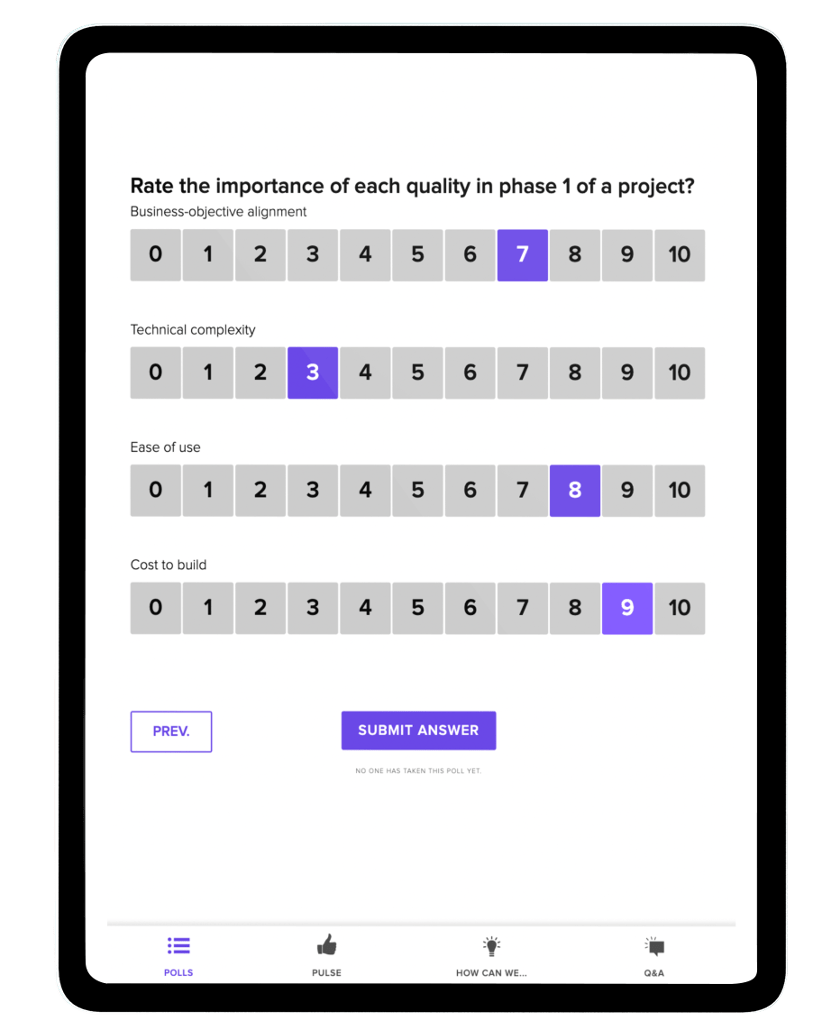Polls are versatile tools used to gather opinions, preferences, and behaviors from a specific group of people on various topics. They are widely utilized across different fields, including politics, marketing, public health, and employee satisfaction, to make informed decisions and strategies. This comprehensive overview will explore the different types of polls and how they are used.
Types of Polls
1. Opinion Polls
Opinion polls are conducted to assess public sentiment on various issues, ranging from political preferences to consumer product choices. They help in understanding what a large group of people thinks about a specific topic
2. Benchmark Polls
Benchmark polls are typically the first polls conducted in a campaign, providing a baseline to measure future changes in public opinion. They help candidates understand their standing before any significant campaigning and identify strengths and weaknesses
3. Brushfire Polls
Conducted between benchmark and tracking polls, brushfire polls help campaigns gauge progress, test messages, and adjust strategies based on how well they are resonating with the electorate
4. Entrance and Exit Polls
Entrance polls are conducted as voters enter polling stations, aiming to predict election outcomes and understand voter behavior. Exit polls serve a similar purpose but are conducted after voters have cast their ballots, providing insights into voter preferences and election integrity
5. Tracking Polls
These are continuous surveys that track changes in public opinion over time, especially useful in closely monitoring shifts during election campaigns
6. Deliberative Opinion Polls
These involve detailed discussion among a small, demographically diverse group to gauge reactions to specific ideas or candidates, often used to understand deeper insights into public opinion
7. Push Polls
Designed to influence rather than measure public opinion, push polls are often criticized for being misleading. They are conducted with suggestive questions to sway respondents towards a particular viewpoint
8. Straw Polls
Informal and unofficial, straw polls are used to gauge the opinion or behavior of a group on a specific issue. They are quick and easy but not always reliable
Conducting Polls
Polls can be conducted through various methods, including online platforms, telephone interviews, and mail-in questionnaires. Modern technology has made online polls particularly popular due to their ease of distribution and the ability to quickly gather feedback from a wide audience
Question Types in Polls

- Single Answer Polls: Respondents select only one answer choice for the question.
- Likert Scale Polls: These measure the intensity of respondents’ feelings towards a statement on a scale, such as strongly agree to strongly disagree
- Multiple Choice Polls: Respondents choose from a list of options, providing straightforward insights into preferences
- Free Text Polls: These allow respondents to answer in their own words, offering deeper qualitative insights
- Rating and Ranking Polls: Rating polls let respondents rate a statement on a scale, while ranking polls ask them to order preferences
- Image Polls:
- NPS Polls: NPS, or Net Promoter Score, lets attendees rate their level of satisfaction with the subject of the Poll. This metric was created to measure customer satisfaction from -100 to 100.
- Numerical Polls: Respondents can enter a single integer as a response.
- Grid Polls: (Multi-rating) respondents can select a rating for multiple items from the interval you choose.
Using Polls Effectively

To use polls effectively, it’s crucial to:
- Clearly define the objective of the poll.
- Choose the right type of poll and question format based on the information needed.
- Ensure the sample is representative of the target population.
- Analyze the collected data to identify trends, patterns, and insights that can inform decision-making.
Polls are powerful tools for gauging public opinion and making informed decisions. By understanding the different types of polls and how to use them, organizations, campaigns, and researchers can gather valuable insights to guide their strategies and actions. Read more about MeetingPulse polling and get started with our Free Trial here.








